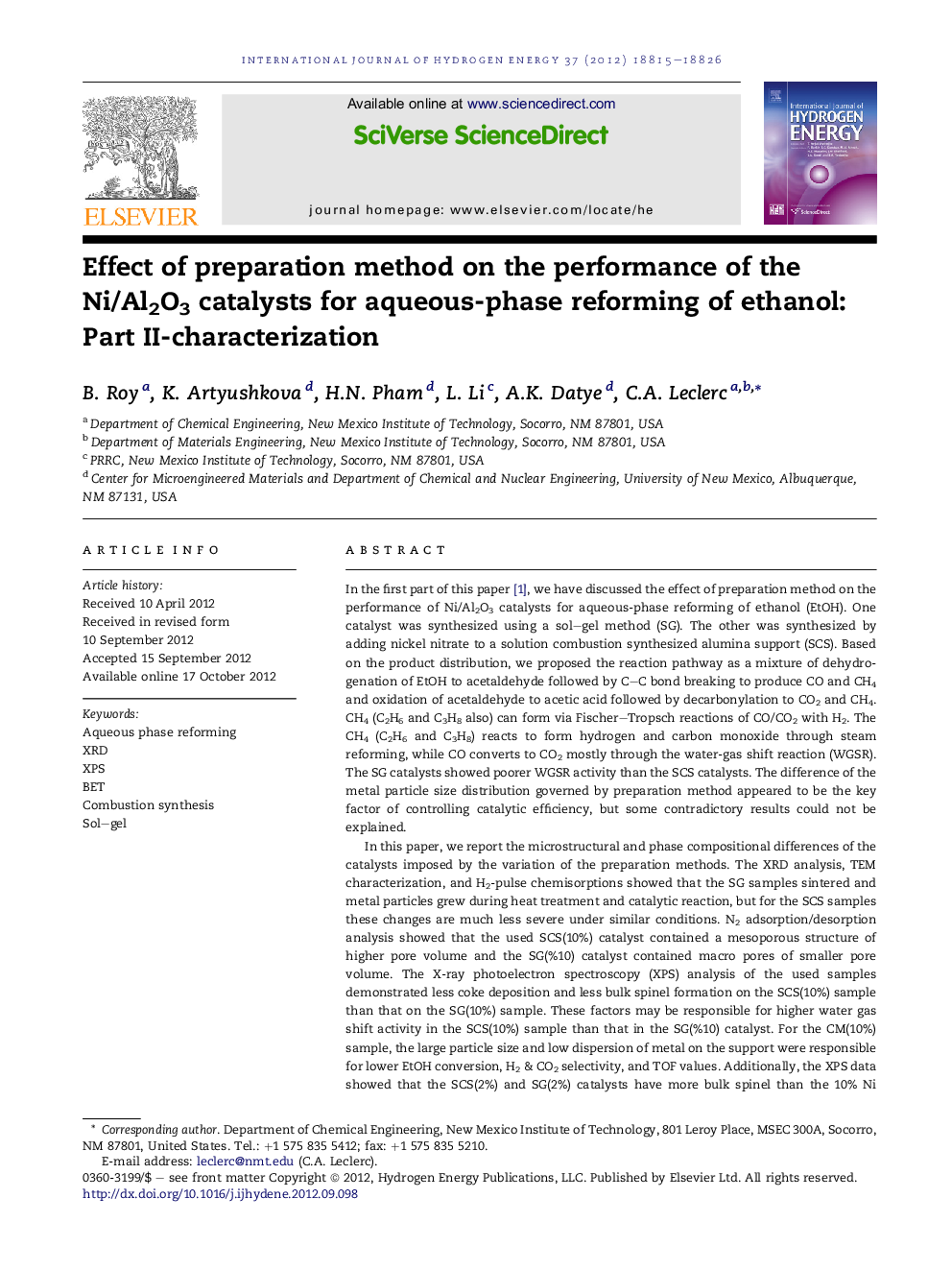| Article ID | Journal | Published Year | Pages | File Type |
|---|---|---|---|---|
| 1276086 | International Journal of Hydrogen Energy | 2012 | 12 Pages |
In the first part of this paper [1], we have discussed the effect of preparation method on the performance of Ni/Al2O3 catalysts for aqueous-phase reforming of ethanol (EtOH). One catalyst was synthesized using a sol–gel method (SG). The other was synthesized by adding nickel nitrate to a solution combustion synthesized alumina support (SCS). Based on the product distribution, we proposed the reaction pathway as a mixture of dehydrogenation of EtOH to acetaldehyde followed by C–C bond breaking to produce CO and CH4 and oxidation of acetaldehyde to acetic acid followed by decarbonylation to CO2 and CH4. CH4 (C2H6 and C3H8 also) can form via Fischer–Tropsch reactions of CO/CO2 with H2. The CH4 (C2H6 and C3H8) reacts to form hydrogen and carbon monoxide through steam reforming, while CO converts to CO2 mostly through the water-gas shift reaction (WGSR). The SG catalysts showed poorer WGSR activity than the SCS catalysts. The difference of the metal particle size distribution governed by preparation method appeared to be the key factor of controlling catalytic efficiency, but some contradictory results could not be explained.In this paper, we report the microstructural and phase compositional differences of the catalysts imposed by the variation of the preparation methods. The XRD analysis, TEM characterization, and H2-pulse chemisorptions showed that the SG samples sintered and metal particles grew during heat treatment and catalytic reaction, but for the SCS samples these changes are much less severe under similar conditions. N2 adsorption/desorption analysis showed that the used SCS(10%) catalyst contained a mesoporous structure of higher pore volume and the SG(%10) catalyst contained macro pores of smaller pore volume. The X-ray photoelectron spectroscopy (XPS) analysis of the used samples demonstrated less coke deposition and less bulk spinel formation on the SCS(10%) sample than that on the SG(10%) sample. These factors may be responsible for higher water gas shift activity in the SCS(10%) sample than that in the SG(%10) catalyst. For the CM(10%) sample, the large particle size and low dispersion of metal on the support were responsible for lower EtOH conversion, H2 & CO2 selectivity, and TOF values. Additionally, the XPS data showed that the SCS(2%) and SG(2%) catalysts have more bulk spinel than the 10% Ni samples and for SCS(2%) sample this is the highest. This diminishes the advantages of smaller Ni particle sizes and less C deposition for them, and explains the apparently anomalous kinetic results observed in the first part of the paper.
► For Ni/Al2O3 catalytic activity depends on preparation method. ► SCS catalysts showed better catalytic activity (Ref. [1]) than SG catalysts. ► Activity not only depends on metal dispersion but also on phase formation. ► Catalysts with low Ni made more bulk spinel and so catalytic activity suffers.
